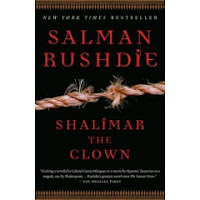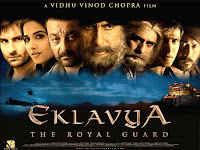
By Salman Rushdie
It is always a pleasure to read Rushdie. The more recent works do not possibly have the power to surprise as much as Midnight’s Children and their plots may seem a bit more laboured…but man, can this guy write!
That unfulfilled dream of Kashmir is embodied in Boonyi Kaul and Shalimar Noman, a dancer and a clown, and their beautiful village of Pachigam that accepts the unacceptable union of a Hindu girl and a Muslim boy. It is Boonyi’s moment of madness, when she makes a pact with the devil, to get away from her claustrophobic Pachigam to see the larger world outside that sets in motion the spiral towards horror. The devil in this case, is the American ambassador to India, Max Ophuls, a man who has himself lost a beloved homeland to the Nazis and in the process become a war hero. Max’s war-time story is an engrossing sub-plot.
Boonyi never quite gets over her flight and neither does Shalimar. When she does come back to Pachigam, she has already been pronounced dead by her village including her beloved father. Dead she is, metaphorically at least, as she leaves behind a daughter she has named Kashmira and comes back only to wait for her promised death at the hands of her beloved Shalimar.
Shalimar in the meantime has joined hands with the international network of Islamic fundamentalists for whom Kashmir is but one stop in their journey. They introduce unknown concepts of Islam into the valley, forcing women to wear the veil (an alien concept in Kashmir till the insurgency) and forbidding contact with the Kashmiri Hindus they call kafirs. Shalimar does not share the burning faith of his militant brotherhood, but what he does harbour within him is the burning fire of vengeance against Boonyi and her American lover. It turns him into a ruthless assassin aided by his clowning skills of tight-rope walking.
When Shalimar ultimately reaches Max, he shockingly discovers the daughter – India Ophuls, named India by one woman and Kashmira by another. The reader cannot but wince at the double metaphor. But that is Rushdie – unabashed about using obvious literary devices to further a tale. India or Kashmira’s tale is a 3rd sub-plot. And possibly the least interesting. The book climaxes to the confrontation-to-the-death between her and Shalimar and Rushdie’s lament on the disappearance of a simpler and more beautiful world is complete.
Is Max’s story a metaphor for the dangers of American intervention in areas best left alone? He is a hero during WWII just as America was. He comes out as less than one after his Kashmir fiasco. There is little sympathy for Shalimar as he lets his personal demons lead him to those who destroy all that he loves best. There is even less sympathy for the Indian army – whose ruthless rape and pillage measures to contain the insurgency lead to a worsening of the situation.
The best parts of the book are the idyllic Pachigam scenes in a less brutal time – the time when Boonyi and Shalimar love each other on the banks of the Muskadeen, the time of the Banquet of 36 courses and the descriptions of the entertainment shows put up by Shalimar’s father Abdullah and his troupe, the rivalry between Pachigam and its neighboring village of Shirmal and the prophecies of the Gujur prophetess.
The book is Rushdie’s requiem to Kashmir. It is a powerful love story and he spares no one who tears the valley apart.




